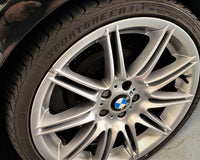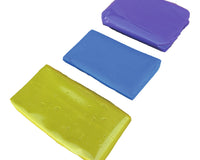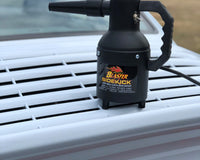Polishing pads are essential tools used in various industries and applications to achieve a high-quality finish on different surfaces. Whether you are working with automotive paint, metal, stone, or even glass, polishing pads play a crucial role in enhancing the appearance and texture of the material. In this comprehensive article, we will delve into everything you need to know about polishing pads, from their types and materials to their applications and maintenance.
What are Polishing Pads?
Polishing pads are circular or rectangular pads made from various materials, such as foam, microfibre, wool, or synthetic fibres. These pads attach to power tools like polishers or sanders, which provide the necessary speed and motion to facilitate the polishing process. The choice of polishing pad depends on the surface material and the desired finish.
Types of Polishing Pads
Polishing pads are available at our Killer Brands online store in various materials, each offering distinct characteristics and benefits. Understanding the different materials used in polishing pads can help you choose the most suitable pad for your specific application. Here are some commonly used polishing pad materials:
Foam Pads
Foam pads are commonly used in the automotive industry and other applications where a delicate touch is required. They come in different levels of firmness, including cutting, polishing, and finishing foam pads. Cutting foam pads are usually denser and more aggressive, designed to remove deeper scratches and imperfections. Polishing and finishing foam pads have softer densities and are used to refine the surface and achieve a glossy finish.
Microfibre Pads
Microfibre pads are highly versatile and suitable for both polishing and cutting in automobiles. They are known for their excellent ability to remove swirl marks, scratches, and other imperfections effectively. Microfibre pads are durable, can absorb and distribute polishing compounds evenly, and provide a consistent finish.
Wool Pads
Wool pads are the go-to choice for the most effective compounding tasks. They are highly effective in removing deep scratches, oxidation, and defects from various surfaces. However, wool pads generate more heat during the polishing process and require caution to prevent damage to the surface.
Synthetic Fibre Pads
Synthetic fibre pads are often used in combination with compounds and polishes for medium to heavy cutting. They are more durable than foam pads and offer a balance between cutting power and finishing ability. Synthetic fibre pads are available in different colours, indicating their level of aggressiveness.
When selecting a polishing pad material from Killer brands, consider the surface material you are working on, and the type of polishing compounds you will be using. Different materials have varying levels of aggressiveness, absorbency, and durability, so it's important to choose a material that matches your specific needs.
Remember to follow the recommendations and guidelines given on each of the polishing pads to ensure safe and effective operation. By selecting the appropriate polishing pad material, you can achieve the desired finish and maximize the efficiency of your polishing process.
Choosing the Right Polishing Pad
We are here to help you choose the right polishing pad to achieve the desired results in your polishing projects. There are several factors to consider when selecting a polishing pad, and understanding these factors will help you make an informed decision. Here are some key points to consider:
- Surface Material: Different surface materials require specific types of polishing pads. For example, delicate surfaces like automobiles benefit from foam pads, which provide a gentle touch and minimize the risk of causing damage. To remove big scratches or give delicate touches on the interiors you can also use wool or synthetic fibres.
- Desired Finish: The level of aggressiveness or abrasiveness of the polishing pad determines the final finish. If you need to remove deep scratches or oxidation from parts of your car, you will likely require a more aggressive pad such as a cutting foam pad or a wool pad. However, if you are aiming for a smoother and glossier finish, Killer brands polishing foam pad or a Microfibre pad will be more suitable. Consider the level of correction or enhancement required and choose a pad accordingly.
- Pad Size and Shape: The size and shape of the polishing pad should be selected based on the surface area and contours of the object you are working on. Smaller pads are considered best polishing pads for detailed or intricate surfaces, allowing for better control and manoeuvrability. Larger pads, on the other hand, are more efficient for covering larger areas quickly. Consider the size and shape of the surface of your car/bike you are working on to ensure that the pad can effectively reach all areas.
- Compatibility with Equipment: It is essential to ensure that the chosen polishing pad is compatible with your power tool or polisher. Different pads available at our store have different attachment mechanisms, such as hook-and-loop or adhesive backing.
By carefully considering these factors and considering our recommendations, you can confidently choose the best polishing pad for your car polishing. Remember that you may require different pads at different scenarios, so it is beneficial to have a variety of pads in your arsenal to cater to various surfaces and desired finishes.
Polishing Pad Maintenance
To maintain the effectiveness and longevity of your quality polishing pads, proper care and maintenance are essential. Here are some maintenance tips:
- Clean the Pads: After each use, clean the polishing pads thoroughly to remove any residue or debris. Rinse them with warm water and mild soap, or use a dedicated pad cleaning solution. Allow them to dry completely before storing.
- Pad Conditioning: Some types of pads, such as foam pads, can be conditioned using a pad cleaning brush or pad spur to remove excess polish and restore their texture. After using the pads, condition them regularly to give it a long life.
- Pad Rotation: Rotate the polishing pads during extended polishing sessions to distribute wear evenly and prevent premature deterioration.
- Store Properly: Store the polishing pads in a clean and dry environment, preferably in airtight containers or bags. Keeping them in a dry place will prevent dust accumulation and maintain their shape. Rinse the polishing pads with warm water, let them dry and then keep in a store. Remember, do not stack other material over the pads as they may lose their shape and effectiveness.
- Replace Worn Pads: Inspect the polishing pads regularly and replace them when they show signs of wear, such as fraying edges, loss of shape, or reduced effectiveness. Using worn pads just to save a few buck may turn out costly for you. The worn pads can leave permanent stains or markers on the surface of your car.
Safety Considerations
At Killer Brands we care about your health and safety. When using our best polishing pads, it's important to follow safety guidelines to protect yourself and the surfaces you are working on:
- Personal Protective Equipment (PPE): Wear appropriate PPE, including safety glasses, gloves, and a dust mask, to shield yourself from debris, chemicals, and airborne particles.
- Work in a Well-Ventilated Area: Ensure that the workspace is adequately ventilated, especially when working with chemicals or generating dust during the polishing process. Do not work on your cars in a closed garage as the chemicals may have adverse effects on your eyes and other body parts.
- Use the Correct Speed and Pressure: Follow the recommendations given along with our polishing pads for the optimal speed and pressure settings. Applying excessive pressure or using high speeds can lead to surface damage or pad disintegration.
- Test in a Small Area: Testing the pads, polish, speed and pressure is very important before the polishing process. Before proceeding with large-scale polishing, test the chosen pad and polish combination in a small, inconspicuous area to ensure compatibility and achieve the desired results.
Polishing Pads – Final Words
Polishing pads are indispensable tools for achieving a flawless finish on various surfaces. Understanding the different types of polishing pads, their materials, applications and maintenance is crucial for achieving optimal results. Whether you are a professional in the automotive, or simply someone looking to restore the shine of your ride, selecting the right polishing pad and using it correctly can make a significant difference.
Remember that each type of polishing pad offers unique characteristics and benefits. Foam pads are ideal for delicate surfaces, while Microfibre pads excel at removing imperfections. Wool pads are perfect for heavy cutting tasks, and synthetic fibre pads strike a balance between cutting power and finishing ability. Understanding the properties of each pad will help you choose the most suitable one for your specific needs.
In conclusion, polishing pads are versatile tools that can transform the appearance of surfaces. By understanding the different types of polishing pads, their materials, applications, and maintenance requirements, you can achieve professional-level results and enhance the overall aesthetic of your projects. So, whether you're a professional or a car and bike enthusiast, embrace the power of polishing pads to unlock the true potential of your surfaces.




